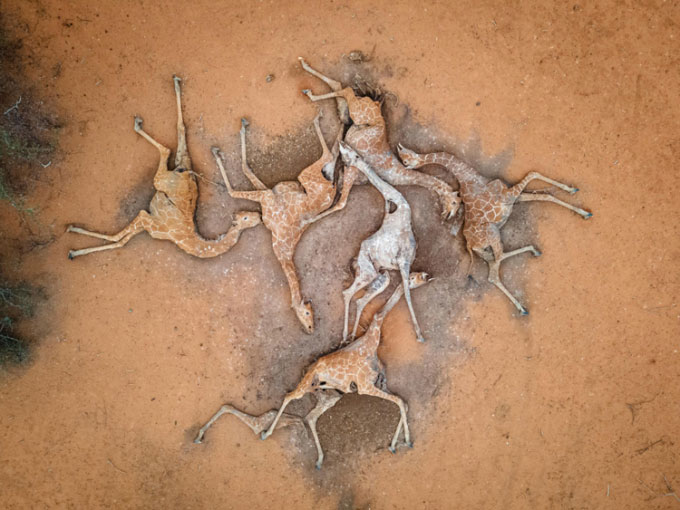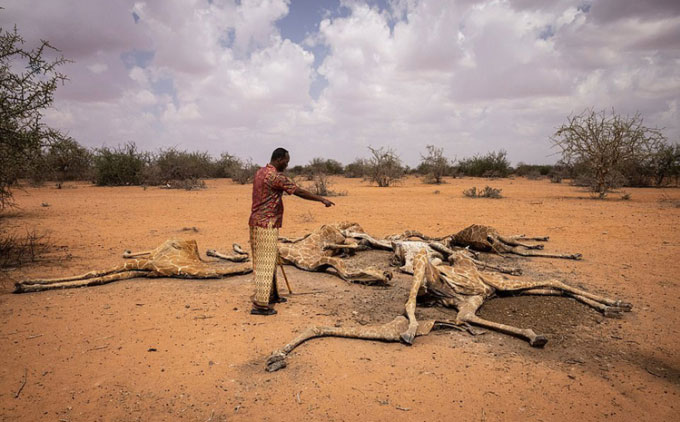Severe drought forces giraffes to struggle for food and water, ultimately succumbing on their way to a water reservoir.

The bodies of six giraffes in the outskirts of Eyrib village, in the Sabuli Wildlife Reserve. (Photo: Ed Ram)
An aerial photograph taken by journalist Ed Ram on December 10 reveals a heartbreaking scene as six giraffes lie dead on the parched ground in the Sabuli Wildlife Reserve, Wajir County, Kenya. In the image, they are piled on top of each other, their bodies emaciated and desiccated. They had been dead for some time, as their bodies showed signs of decomposition.
It is likely that these giraffes were already weak and subsequently perished after getting stuck in the mud. They may have been attempting to reach a nearby water reservoir, which is also nearly depleted. The giraffe carcasses were moved to the outskirts of Eyrib village, Wajir County, to prevent contamination of the water reservoir.
This tragedy is a consequence of the severe drought in Kenya, which has left both humans and animals struggling to find food and water. Scientists warn that the drought threatens the lives of 4,000 giraffes in the neighboring Garissa County. The situation has worsened due to farming along rivers, which has hindered wildlife from accessing watering points, according to Ibrahim Ali, an expert at the Bour-Algi Giraffe Sanctuary.

Eyrib village chief assistant, Abdi Karim, looks at the dead giraffe herd. (Photo: Ed Ram)
In Kenya, it is not just animals that are at risk. Approximately 2.1 million people are also facing hunger due to the severe drought affecting half of Kenya’s territory, as warned by the country’s drought management agency in September.
On December 14, the United Nations reported that 2.9 million Kenyans are still in need of urgent humanitarian assistance. Some areas in the country have recently received record low rainfall in decades. Many water sources for both people and livestock have dried up, forcing families to walk further and causing tension between communities, leading to an increase in conflict, according to the United Nations Office for the Coordination of Humanitarian Affairs.


















































